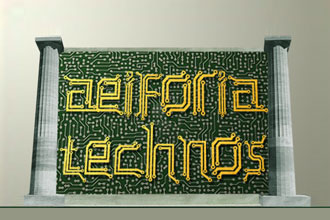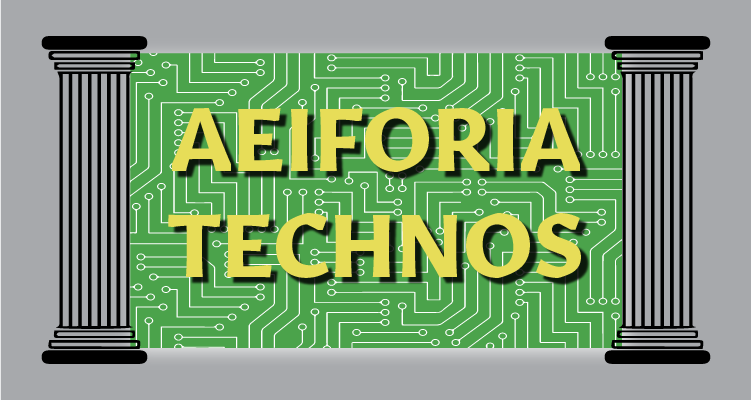Shifting Sands of the Built Environment from an ICT POV
 Many of my previous articles have touched on the notion of how truly competitive built environments are rife with connectivity, from the small scale to the vast campuses and further into global portfolios. Sensors and meters, along with extensive control capability embedded into the equipment, provide a connected and monitored world using sophisticated cross-platform management systems. The Information Communications Technology (ICT) industry is at the epicenter of this ever evolving revolution of two way communication and extends beyond the classroom or corporate boardroom. Now a balanced conversation among the electric power grid, vehicles, intelligent buildings, machine-to-machine and human interaction is happening at an unprecedented pace. The rapid expansion of mobile broadband is facilitating the control of more and more devices within rooms, buildings and whole built portfolios by a conventional tablet or smart phone or by machine only intercommunication.
Many of my previous articles have touched on the notion of how truly competitive built environments are rife with connectivity, from the small scale to the vast campuses and further into global portfolios. Sensors and meters, along with extensive control capability embedded into the equipment, provide a connected and monitored world using sophisticated cross-platform management systems. The Information Communications Technology (ICT) industry is at the epicenter of this ever evolving revolution of two way communication and extends beyond the classroom or corporate boardroom. Now a balanced conversation among the electric power grid, vehicles, intelligent buildings, machine-to-machine and human interaction is happening at an unprecedented pace. The rapid expansion of mobile broadband is facilitating the control of more and more devices within rooms, buildings and whole built portfolios by a conventional tablet or smart phone or by machine only intercommunication.
Although this is still at its infancy, the convergence has already provided some very impressive results towards helping not-for-profit and for profit entities achieve their goals whether as a social mission or increased profit with lower operating costs all while improving and aligning with sustainability desires. Key indicators based on the latest complete 2012 results (2013 numbers are still being crunched) show that overall CO2 emissions in the U.S. declined about 14 percent lower from the peak year of 2007 and have trended downward significantly since ’73-’74 oil embargo as expressed in real GDP dollar. This equates to 1.93 pounds of CO2/dollar in 1974 to .76 pounds of CO2/dollar in 2012 and they are expected to have dropped further for 2013. Consumption also dropped in a similar fashion from 15.41 kBTU/GDP dollars in ’74 to 7.48 kBTU/GDP dollars in 2012. In addition to these savings total vehicle miles traveled (VMT) in the U.S. per capita also declined 6 percent since the embargo and half of that was since 2007 when VMT peaked. Some of this can be attributed to the declining economy but it is also a direct result of the use of ICT industry solutions such as video conferencing and telepresence allowing more remote workers and fewer miles traveled between groups for meetings.
A good reason for this is the massive high-speed broad band penetration, with access for more than 40 percent of the population and rising. We still have a long way to go as this impressive number still ranks the US as 15th per capita in industrialized nations. In addition to human connectivity, wired buildings with intelligent systems are also helping to keep efficiently designed buildings operating at peak levels increasing building efficiency by 8 percent since the 2008 peak energy use. Continued roll-out of ICT technologies and broadband connectivity is only going to help accelerate this along with the continued increase in efficient and smart building design following prescriptive measures such as following green design roadmaps including LEED, CalGreen, Green Globes, STEP and others. Municipalities and the code councils are also working hard allowing the ICT industry to leverage an edge by incorporating best practices and codifying connectivity and control using ICT platforms such as remote plug load monitoring, systems power management and control.
This is of course also concurrent with changing attitudes and demographics. Because of the recent economic downturn and sluggish recovery, building owners are trying to do more with less with the trend towards greater asset utilization continuing to rise. The corporate environment as well as retail industries and education are fantastic barometers for how this is unfolding. As an example, the average office space per person has been steadily declining and is expected to drop by 30 percent over the next five years. Big box retailers including names such as Wal-Mart and Target are adding to their portfolio or relocating out of suburban malls and into tighter urban markets with a smaller select inventory on the shelves that serve specific demographics.
One particular obvious aspect of this is commercial vacancy rates are still higher than expected after the end of the Great Recession in 2009. This means there is less new square footage being added to the inventory and the high cost is pushing use of existing assets. Strategic use of technology is enabling companies to shrink their physical presence by creating more flex-space and reducing permanent dedicated employee space. This first-come-first-serve attitude is best served through what the ICT industry has to offer including connectivity, presentation technology, and other forms of collaboration and communication including incorporating ever increasing remote workers. This is seen in both the private sector as well as the governmental arena. Retail stores for instance are providing storefronts that have only demo products and internet connectivity that allows consumers to physically engage with a product than order it online to be delivered to their home directly. This saves on shipping and storage at the actual brick and mortar location as well as allows retailers to reduce their overall store size as warehouse space is not needed as much. Subsequently, this reduces the stores overall carbon footprint and actually has been shown to increase profitability. It also allows them the opportunity to locate in areas where square footage may be at a premium and locate in under-served markets that would have normally been out of reach. This would not be possible without ICT technology.
With this compacting of space however, the energy use density is rapidly increasing and is magnified by the inclusion of more and more technology in the workplace environment. It has been documented through several industry and governmental studies that the amount of energy demand required for ICT related technology is on a continuous upward trajectory and will continue that way for some time. The best way to stem any waste from this increase is to incorporate intelligence, connectivity, and control; all of which the ICT industry is all too familiar with and has ready-made answers to this problem.
The demographics are not only showing an accruing comfort level with this shrinking landscape but a demand for it particularly with the Baby Boomer generation and the Millennials who are now searching for the place they want to be first (as long as there is close access to what is needed) over increased mobility. As an example, the Generation Y (18-34) demographic has bought 30 percent fewer cars than even as little as four years ago and the Gen X members reduced personal transportation consumption by 25 percent This is a direct result of the compactness arriving in desirable urban environments that have a well established technology infrastructure allowing for virtual mobility. This is creating a suburban flight back to urban cores which in effect are reducing the carbon footprint simply by having technological access to everyday needs. This includes telecommuting ability, online shopping, entertainment and information access.
ICT is the enabler for a change in the landscape of consumption and ownership which is having a dramatic effect on how we use or arrive at our buildings. And after some hesitancy and false starts, the pervasiveness of technology is certainly remaking the entire way we manage facilities. This will continue to increase with the adoption of smart grid technology with the major impact seen on the building side of the meter with a smaller but no less important impact on the utility side of the equation. ICT cannot alone, however, solve all the problems and inefficiencies with the significant cultural and structural changes that are happening. What ICT provides to this cultural shift is the abundance of information irrelevant to context to prove out economic efficiency that allows the user to make rational decisions in a uniform manner. ICT helps reduce the risk by reducing the need to over-consume resources by providing the data analytics and visual interpretations such as dashboards to make better decisions over traditional building management traditions. Some feel it is just another tool in the tool belt of the facilities manager while others feel it is truly a disruptive process that has transformed the built environment.
This transparency and easy access to data will undoubtedly move to further even greater efficiencies from our built world with ICT leading the way. Do you have an opinion about this? We would love to hear it.




